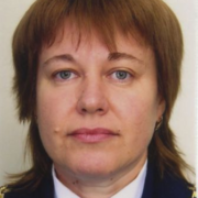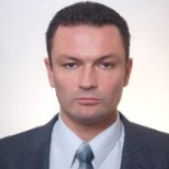International Journal of Computer Network and Information Security (IJCNIS)
IJCNIS Vol. 13, No. 5, 8 Oct. 2021
Cover page and Table of Contents: PDF (size: 744KB)
The Mathematical Model for Research of the UAV Longitudinal Moving
Full Text (PDF, 744KB), PP.29-39
Views: 0 Downloads: 0
Author(s)
Index Terms
unmanned aerial vehicle, control system, motion modeling, flight mode, performance evaluation, logarithmic frequency response
Abstract
The paper presents one of the perspective directions of the development to modern aviation, which is connected with designing and producing unmanned aerial vehicles (UAV) of various functionalities for applying in both military and civilian spheres. The syntheses of UAV control systems, regardless of their type and purpose presumes creation of adequate mathematical models, first of all adequate aerodynamic mathematical models. In the paper results that forms and justify the aerodynamic mathematical model and as well as the results of building a general mathematical model of the longitudinal movement of the perspective UAV are presented. Also factors that forms the mathematical model on given aerodynamic, geometric, mass and inertial data for a hypothetical perspective altitude long-range UAV are submitted. Assessment of the impact of these data on the dynamic, temporal, and logarithmic frequency response UAV also has been given in this paper.
Cite This Paper
Sergii Zhdanov, Natalia Kadet, Valerii Silkov, Mariia Zirka, Olexander Rasstrygin, Andrii Zirka, "The Mathematical Model for Research of the UAV Longitudinal Moving", International Journal of Computer Network and Information Security(IJCNIS), Vol.13, No.5, pp.29-39, 2021. DOI: 10.5815/ijcnis.2021.05.03
Reference
[1] Warwick Gr. Cooling Down / Graham Warwick, Larry Dickerson. Aviation week & space technology. 2013. January 7. P. 80…84.
[2] Zhdanov S.V. Sistemy upravleniya bespilotnykh letatel'nykh apparatov voennogo naznacheniya: analiz sostoyaniya i tendentsiy razvitiya [Control system of unmanned aerial vehicles for military use: an analysis of the status and trends]. Tekhnologicheskie sistemy [Technological systems]. 2011. № 3 (56). P. 63…70.
[3] Ilyushka V.M., Mitrakhovich M.M., Silkov V.I. et al. Bespilotnye letatel'nye apparaty: Metodiki priblizhennykh raschetov osnovnykh parametrov i kharakteristik [Unmanned Aerial Vehicles: Methods of approximate calculations of the main parameters and characteristics]. Ed. by V.I. Silkov. Kiev: CRI AME AF of Ukraine, 2009. 302 p.
[4] Bobrov S.V. Raschet kharakteristik ustoychivosti i upravlyaemosti samoleta [Calculation of stability and controllability of the aircraft]. Kiev: KVVAIU, 1992. 182 p.
[5] Krasovskii A.A. Sistemy avtomaticheskogo upravleniya poletom i ikh analiticheskoe konstruirovanie [Automatic flight control system and its analytical design]. Moscow: Nauka [Moscow: Publishing House «Sciences»], 1973. 560 р.
[6] Galin A.F. Raschet vozmushennogo dvizheniya samoleta [Calculation of the perturbed motion of the aircraft]. Kiev: KVIAVU Air Force, 1964. 182 p.
[7] Smirnov V.A., Nerubatsky V.E. Normirovanie i otsenka kachestva pilotazhnykh kharakteristik samoletov: monografiya [Regulation and quality assessment of aircraft handling characteristics: мonograph]. Kiev: CNII VVT VSU, 2013. 176 p.
[8] P. Kanovsky, L. Smrcek, and C. Goodchild, “Simulation of UAV Systems,” Acta Polytechnica, vol. 45, no. 4, pp. 109–113, 2005.
[9] H. Ergezer and K. Leblebicioglu, “Planning unmanned aerial vehicles path for maximum information collection using evolutionary algorithms,” in Proceedings of the 18th IFAC World Congress, pp. 5591–5596, Milano, Italy, 2011.
[10] Metodika nechItkogo otsInyuvannya dlya sistem pIdtrimki priynyattya proektnih rishen na etapah stvorennya zrazkiv ozbroennya ta vIyskovoyi tehnIki O. Golovin, M. ZIrka, N. Kadet, N. Fregan, V. Kotsyuruba - Ozbroennya ta viyskova tehnika 23 (3), 99-109, 2019. View at: Google Scholar





